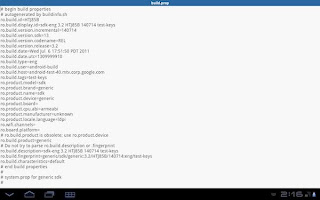TechSource: 8 Exciting Features of Linux Mint 12 "Lisa" |
| 8 Exciting Features of Linux Mint 12 "Lisa" Posted: 29 Nov 2011 08:31 PM PST  Linux Mint, which has effortlessly managed to usurp the top spot from Ubuntu (according to DistroWatch ranking), has just released its latest version. Codenamed "Lisa", Linux Mint 12 is based on Ubuntu 11.10 and features a perfect blend of GNOME 3 and the newly designed Mint GNOME Shell Extensions (MGSE). Linux Mint, which has effortlessly managed to usurp the top spot from Ubuntu (according to DistroWatch ranking), has just released its latest version. Codenamed "Lisa", Linux Mint 12 is based on Ubuntu 11.10 and features a perfect blend of GNOME 3 and the newly designed Mint GNOME Shell Extensions (MGSE). So, if you're dying to know what's in store for Linux Mint 12 "Lisa", here's a list of some of the exciting features it comes packed with: 1. The Desktop Unity and GNOME 3 both had their share of controversy. Both desktops were equally criticized for being difficult to use and sometimes, for being downright unusable. Keeping in mind these issues, Linux Mint 12 was built to cater the needs of many disgruntled users who were unsatisfied with the aforementioned desktops. Though Mint doesn't bare the slightest of resemblance to Unity, nor to GNOME 3 for that matter, it does, however, include a blend of some of the best features you'll find on those contentious desktops. For example, Mint loyalists will be relieved to find a revamped version of the popular Mint Menu.  Being a cross between GNOME2 and GNOME Shell, Lisa includes two panels, one at the top and other at the bottom. The top panel houses the system tray as well as the 'Activities' button whereas the bottom panel lets you switch between your tasks, and manage your devices and notifications. Users can access applications from either the Mint Menu or from the Activities menu. While the top panel is slightly transparent, the bottom panel sports a greyish-black sleek look, which many new users will find appealing.  2. New Alt-Tab Switcher Mint 12 features a Unity-style Alt-Tab switcher that allows users to quickly jump between different tasks. Since being task-centric, switching takes place between windows and not applications.  3. MATE Not so long ago, Linus Torvalds expressed his discontent over the direction GNOME 3 was heading to. GNOME 3, according to him, was an unholy mess. Also in his rant, he encouraged developers to come up with a fork of GNOME 2. Well, Linux Mint 12 has done exactly the same thing. The new release also features MATE, a desktop environment that is forked from GNOME 2, keeping old-time Linux users from going insane. Since MATE is still under development, there might be stability issues with it; however, some users and trolls proclaim that they still find it more stable than GNOME Shell. Also, due to size limitations, MATE is included only in the DVD version of Mint. If you've downloaded the CD version, you can install it by typing in/pasting the following command in the terminal: sudo apt-get install mint-meta-mate 4. DuckDuckGo Linux Mint is one of the first Linux-based distros to include DuckDuckGo as the default search engine. Owing to privacy concerns, more and more users have started looking for alternatives to Google, Bing and Yahoo. DuckDuckGo is a new kid on the block that can be considered as a decent alternative to Google. Thanks to their convincing privacy policy, and the number of features, the budding startup has found itself a place in the browsers of many privacy proponents. Of course, if you don't like it you can always switch to Google. 5. Kernel 3.0 Since Mint 12 is based on Ubuntu 11.10, it includes the latest kernel, which is kernel version 3.0. The release includes many improvements like improved Brtfs support, bug fixes, and security enhancements. 6. GTK 3.2 Since Mint 12 is based on GNOME 3.2, you'll find the beautiful looking GTK 3-based windows and menus everywhere. Nothing to drool over here, but it just looks a lot better. 7. New Theme 8. New Wallpapers Mint has always been popular for its great set of wallpapers. This time too, the team has put together a great collection of some high quality backgrounds that will make your desktop look even more awesome.  So Unity users, are you switching to Mint? According to a recent poll by OMGUbuntu, majority of the users still use Unity. So, if you're a Unity user, are Mint's features convincing enough to make you switch? Do let us know in the comments section below. Written by: Abhishek, a regular TechSource contributor and a long-time FOSS advocate. |
| You are subscribed to email updates from TechSource To stop receiving these emails, you may unsubscribe now. | Email delivery powered by Google |
| Google Inc., 20 West Kinzie, Chicago IL USA 60610 | |













